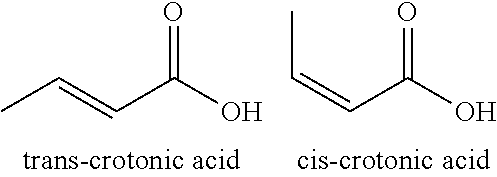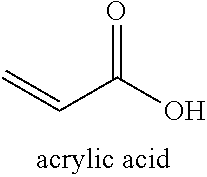Process for Ultra Pure Chemical Production from Biobased Raw Starting Materials
a biobased raw material and chemical technology, applied in the direction of biocide, waste based fuel, heterocyclic compound active ingredients, etc., to achieve the effect of reducing trace level impurities
- Summary
- Abstract
- Description
- Claims
- Application Information
AI Technical Summary
Benefits of technology
Problems solved by technology
Method used
Image
Examples
example 1
Production of Biobased GBL from Pyrolysis of Dried Whole Fermentation Broth
[0071]This is a comparative example describing a process for producing biobased GBL from pyrolysis of whole dried fermentation broth containing biomass with P4HB polymer prepared via fermentation using an Ecoli strain engineered to maximize the production of poly-4-hydroxybutyrate polymer as published in WO 2011 / 100601.
[0072]Biomass containing poly-4-hydroxybutyrate (poly-4HB) was produced in a 20 L New Brunswick Scientific fermentor (BioFlo 4500) using a genetically modified E. coli strain specifically designed for high yield production ofpoly-4HB from glucose syrup as a carbon feed source. Examples of the E. coli strains, fermentation conditions, media and feed conditions are described in U.S. Pat. Nos. 6,316,262; 6,689,589; 7,081,357; and 7,229,804. The E. coli strain generated a fermentation broth which had a PHA titer of approximately 100-120 g of PHA / kg of broth. After fermentation, the broth was washed...
example 2
Production of Biobased GBL from Solvent Extracted Whole Fermentation Broth
[0076]This example describes a process for producing biobased GBL from whole fermentation broth which contained biomass with P4HB polymer, water and any dissolved residual nutrients or starting mateirals used to grow the PHA polymer prepared via fermentation using an Ecoli strain engineered to maximize the production of poly-4-hydroxybutyrate polymer whereby the P4HB polymer is first solvent extracted and then the solution thermolyzed under vacuum.
[0077]Aqueous fermentation broth consisting of E. coli microbial biomass containing poly-4-hydroxybutyrate (P4HB) polymer was prepared from glucose as described in International Patent Pub. WO2011 / 100601 to Metabolix. The PHA titer for the broth was measured to be 175.8 g P4HB / kg of broth with a washed dry cell content (WDC) of 23.4%. The fermentation broth was pH adjusted to 11.5 by the addition of approximately 8.5 g of lime / kg broth (Ca(OH)2, Sigma Aldrich). 800 g...
example 3
Generation of Biobased GBL from Continuously Extracted Whole or Spray Dried Broth
[0078]In this example, ultra high purity GBL is produced from a poly-4-hydroxybutyrate / solvent solution that was prepared by extracting whole or water reconstituted spray dried broth using a continuous extraction / separation process.
[0079]The process involves the continuous mixing of aqueous fermentation broth with a heated solvent stream. Typical solvents to extract the poly-4-hydroxybutyrate from the whole broth could include 2-pentanone, 3-pentanone, cyclohexanone, methyl ethyl ketone or acetone. The mass ratio of the solvent to broth used within the process is typically maintained at a value of less than 1.0. During the process, a pair of control pumps are used to maintain targeted flows of broth and solvent feeding the process. Heated solvent is blended directly with the unheated broth in a mixing loop (extraction loop) utilizing an oversized centrifugal pump to circulate the mixture around the mixi...
PUM
| Property | Measurement | Unit |
|---|---|---|
| weight percent | aaaaa | aaaaa |
| temperature | aaaaa | aaaaa |
| temperature | aaaaa | aaaaa |
Abstract
Description
Claims
Application Information
 Login to View More
Login to View More - R&D
- Intellectual Property
- Life Sciences
- Materials
- Tech Scout
- Unparalleled Data Quality
- Higher Quality Content
- 60% Fewer Hallucinations
Browse by: Latest US Patents, China's latest patents, Technical Efficacy Thesaurus, Application Domain, Technology Topic, Popular Technical Reports.
© 2025 PatSnap. All rights reserved.Legal|Privacy policy|Modern Slavery Act Transparency Statement|Sitemap|About US| Contact US: help@patsnap.com



